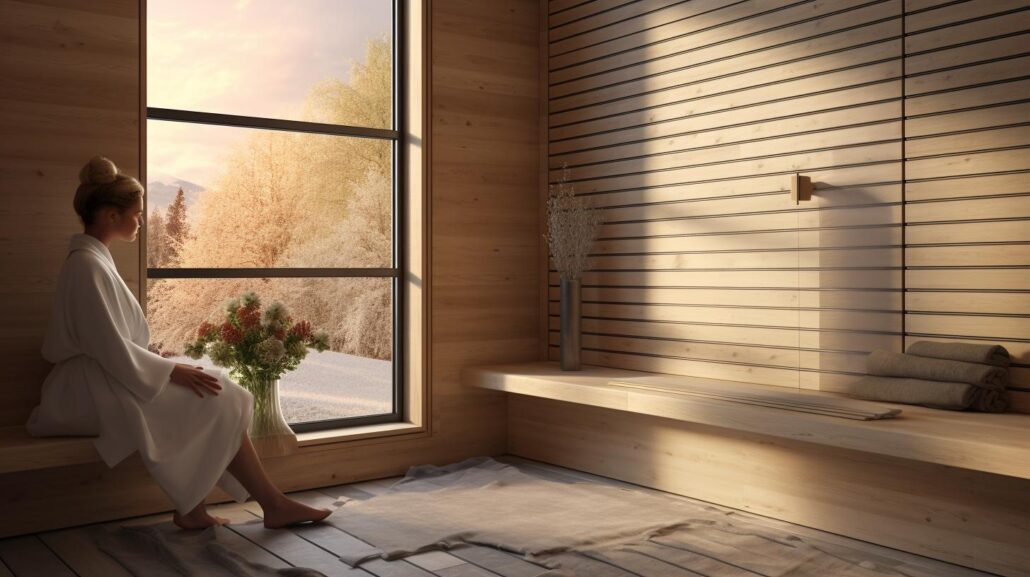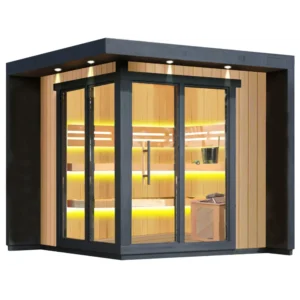Have you ever wondered, “How much electricity does a sauna use?” or “What does it cost to run a sauna in your home?” Whether you’re considering installing a sauna or already own one, understanding its energy consumption can help you plan your budget and energy usage better. This guide will explore everything you need to know about sauna electricity usage, energy efficiency, and costs—perfect for anyone curious about making their sauna more energy-efficient or cost-effective.
What Affects Sauna Electricity Usage?
The amount of electricity a sauna uses depends on several factors, including:
- The type of sauna:Traditional steam saunas and infrared saunas consume energy differently.
- The size of the sauna:Larger saunas typically require more electricity to heat.
- Insulation and materials:Well-insulated saunas retain heat better, reducing energy use.
- Frequency of use:Regular sauna use will obviously consume more electricity over time.
For example, a small infrared sauna might use as little as 1.5 kWh, while a larger traditional sauna could consume up to 6 kWh per session.

How Much Electricity Does a Home Sauna Use?
On average, a home sauna uses between
1.5 kWh to 9 kWh per hour, depending on the type and size. Here’s a quick breakdown:
| Type of Sauna |
Electricity Usage (kWh/hour) |
| Infrared Sauna |
1.5 – 3 kWh |
| Traditional Steam Sauna |
4 – 9 kWh |
For reference, a family-sized sauna might use around
6 kWh per session. If your electricity rate is $0.12 per kWh, that’s about
$0.72 per session for an infrared sauna or
$1.44 for a traditional sauna.
Traditional vs. Infrared Sauna: Which Uses More Energy?
Traditional saunas heat the entire room to high temperatures using electric heaters or wood stoves, which require more energy. In contrast,
infrared saunas heat your body directly using infrared light, consuming less electricity overall.
Key Differences:
- Traditional Sauna:Uses 4-9 kWh per hour, depending on size.
- Infrared Sauna:Consumes 1.5-3 kWh per hour, making it more energy-efficient.
If you’re looking to save on energy costs, an infrared sauna is the better choice. However, traditional saunas provide a more intense, “classic” sauna experience.
How to Calculate the Cost of Running a Sauna
To calculate the cost of running your sauna, use this formula:
(Sauna power consumption in kWh) × (hours used) × (electricity rate)
For example:
- A 6 kW traditional sauna running for 1 hour at $0.12 per kWh costs:
6 kWh × 1 hour × 12=0.12=0.72
- An infrared sauna using 2 kW for 1 hour at the same rate costs:
2 kWh × 1 hour × 12=0.12=0.24

Energy Efficiency Tips for Saunas
If you’re concerned about energy consumption, here are some tips to make your sauna more energy-efficient:
- Insulate Properly:Ensure your sauna is well-insulated to prevent heat loss.
- Use a Timer:Limit sauna sessions with a timer to avoid leaving it on unnecessarily.
- Choose an Infrared Sauna:Infrared saunas typically use less electricity.
- Optimize Preheating:Preheat your sauna only for the time needed (usually 15-30 minutes).
Cost of Electricity for Different Types of Saunas
Different sauna types come with unique energy demands. Here’s a comparison:
| Sauna Type |
Electricity Use (kWh) |
Estimated Cost (per hour) |
| Infrared Sauna (small) |
1.5 – 2 kWh |
0.18−0.18−0.24 |
| Infrared Sauna (large) |
2.5 – 3 kWh |
0.30−0.30−0.36 |
| Traditional Sauna (small) |
4 – 5 kWh |
0.48−0.48−0.60 |
| Traditional Sauna (large) |
6 – 9 kWh |
0.72−0.72−1.08 |
How Much Does It Cost to Run a Sauna Per Month?
The monthly cost of running a sauna depends on how often you use it. For example, if you use a sauna for 1 hour, 3 times a week:
- Infrared sauna: 3 sessions × 4 weeks × 24=0.24=2.88/month
- Traditional sauna: 3 sessions × 4 weeks × 72=0.72=8.64/month
For daily use, costs can increase to 10−10−30 per month, depending on the sauna type.
Do Saunas Use a Lot of Electricity?
Compared to other household appliances, saunas are relatively energy-intensive. However, they are not used continuously, so their overall impact on your electricity bill is manageable.
For context:
- A sauna uses about as much electricity as an oven or air conditioner during operation.
- Infrared saunas are significantly more efficient, using less electricity than traditional saunas.
Factors to Consider When Installing a Sauna
When installing a sauna, keep these factors in mind to manage energy use and costs:
- Size and placement:Smaller saunas use less electricity, and indoor saunas are more energy-efficient than outdoor ones.
- Heater type:Electric heaters are common, but wood-burning heaters can be an alternative in rural areas.
- Insulation quality:Proper insulation reduces heat loss and energy costs.
Are Saunas Worth the Energy Costs?
Yes, saunas are worth the energy costs for many people due to the health and relaxation benefits they provide. Regular sauna use can:
- Improve circulation
- Relieve stress
- Support detoxification
For a relatively small monthly cost, you can enjoy these benefits in the comfort of your home.
Conclusion: What You Need to Know About Sauna Electricity Usage
Here’s a quick summary of the most important points:
- Infrared saunas are more energy-efficient than traditional saunas.
- The cost to run a sauna depends on its size, type, and frequency of use.
- Simple energy-saving tips, like proper insulation and using a timer, can reduce electricity bills.
- Saunas don’t use as much electricity as you might think compared to other appliances.
If you’re considering a sauna for your home,
Verita Solus offers a range of premium sauna options, including
infrared sauna rooms and
outdoor saunas.


